How do you decide whether or not to buy a book? It seems interesting, but is the author just good at writing a description and getting a few raving testimonials?
When buying a web application you have an opportunity to try it out before you buy. 14 or 30 day free trials are common, so that you can make sure it will work for you. Many other types of products have trials or lite versions as well. That doesn’t work well for books.
The sample chapter
Since you can’t give away the entire book and ask for money later, it’s best to give away a sample chapter combined with a detailed table of contents. Simply export one chapter of your book to a PDF document and you are ready to go.
Also your sample doesn’t need to be a specific chapter. You can pick and choose some of your favorite sections from around the book to combine into a single sample. FInd content that you think will really resonate with your visitors and convince them to buy.
I like to start with a personal note in the beginning introducing the chapter and maybe providing some context for the book, then add the full table of contents in the PDF. Remember, visitors are using this PDF to decide whether or not to purchase your book, so be convincing.
Then at the end of the document I add another page saying “if you enjoyed this chapter, purchase the full book for more information on X, Y, and Z.”
Combine that with a link to the sales page and you have a nice little PDF that can work as a sales tool wherever it gets passed around the web.
Promoting the sample
After creating your sample PDF the next step is to link to it from your book sales page. You could just include a text link, but that doesn’t look very good (and won’t draw attention from many visitors).
Instead I like to make a graphic visually displaying the chapter contents as an open book. Here are two examples from The App Design Handbook and Authority:
I’ve found that moving from a text link to a more visual graphic can double the number of downloads of a sample chapter. That’s expected since it is much more visual and will grab more attention.
Poor delivery
Now just clicking the link to download the PDF may be convenient, but it isn’t in your best interest as the seller. Because most people who download your sample chapter will forget about it without actually reading it, you are missing out on a lot of potential. Plus, there’s another way you can make it more convenient for more readers: email it to them.
Do you ever download a PDF, but then wish you had it on your iPad? I do that all the time. My solution is to place it in Dropbox or (more often) email it to myself.
So on my sales sites I make it easy by offering visitors an option to have the sample chapter sent directly to any email address they want. That makes it easy to pull up on a mobile device.
But of course some people won’t want to add their email address—that’s okay—so I still let you click the chapter image to go directly to the PDF.
Here’s an example of the full download setup for Authority:
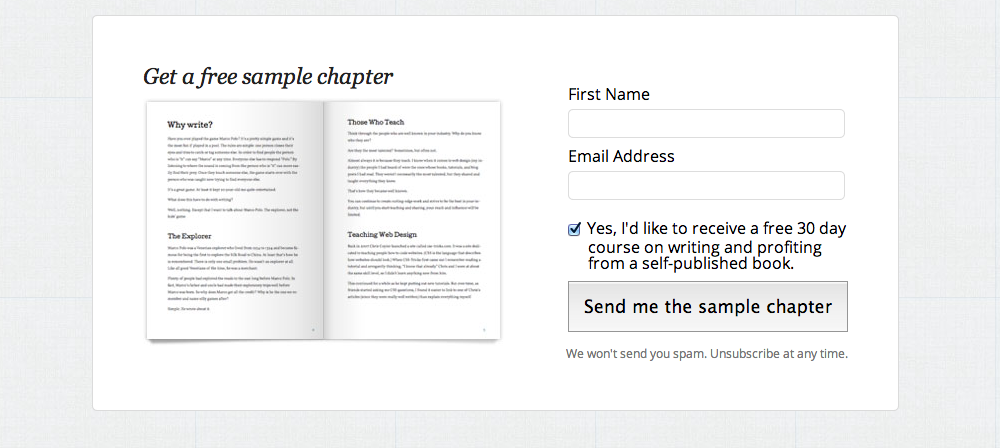
Marketing
Convenience is nice, but if you know anything about me you know that I always try to improve and streamline the marketing as well. That’s where the real value of offering an email form comes from.
Did you know that really a lot of people will fill out that email form rather than just downloading the chapter directly? That’s a lot of subscribers to your email list. I was actually surprised with just how many.
In the three or four months since adding these forms to my book pages I’ve had over 1,000 subscribers through those forms. If I had known how well they would add subscribers I would have added them much earlier!
Here are the stats for each book individually:
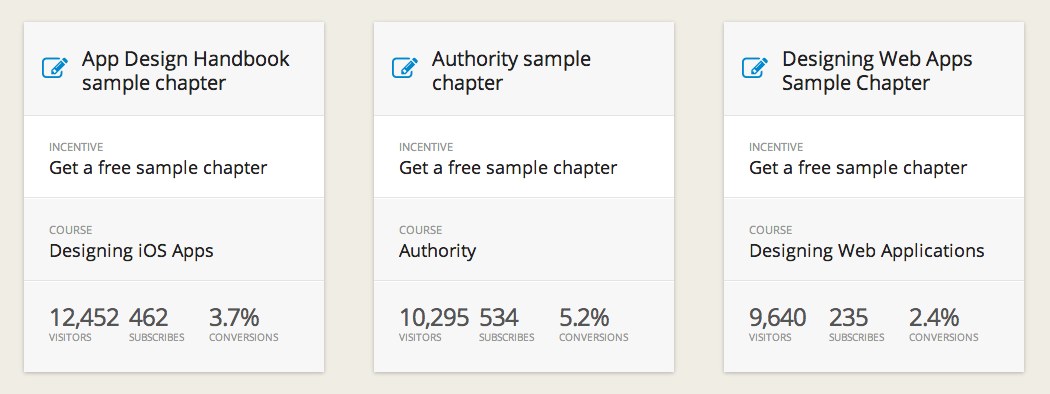
Opt-in conversion rates
It’s interesting that the form for Designing Web Apps converts at 2.4% (a conversion being an email address) whereas Authority converts at 5.2% (more than double). When looking at the actual pages I think it is pretty easy to figure out why.
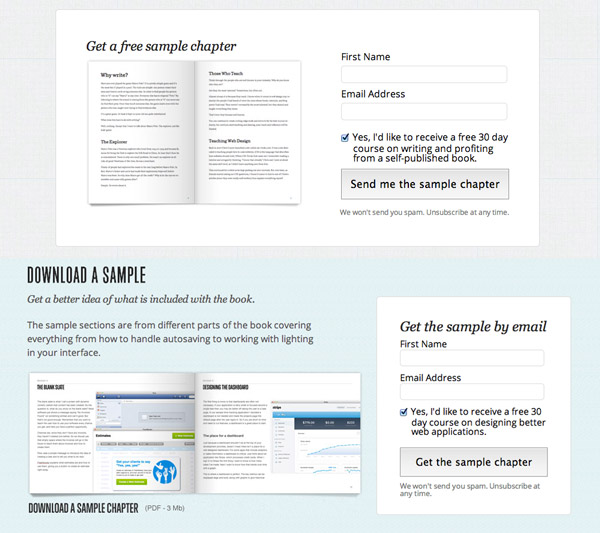
On the Authority page the email box is directly tied to the sample chapter and on Designing Web Apps they seem like two separate elements. Also Designing Web Apps has text tied to the button explicitly telling you to download it. That’s my explanation for the lower conversion rate, I’d love to hear if you think it is being caused by something else.
Email courses
If you were paying attention you may have noticed another checkbox on those subscription forms. That checkbox is an offer to “receive a free 30 day course on designing better web applications.” Or something related for each of the books.
I only add subscribers to my list who leave that box checked. As an average across my three forms 94% of subscribers leave that box checked. Not bad. Meaning only 6% just want the sample chapter and don’t want to hear from me again.
So what exactly does that checkbox do?
The last thing I want is for someone to download the sample chapter, read a little bit of it, and then forget to come back and buy the book. Though unfortunately this happens all the time. So as the seller I have two goals after capturing their email address:
- Keep the book top of mind
- Provide more value to convince them to purchase
Both of these can be done through an automated email sequence.
The sequence
Subscribing, with the course box checked, signs you up for an email course that sends out 5 to 8 emails spread out over 30 days.
I send the first email about 2 days after the subscriber has downloaded the sample chapter. In that first email I include a reminder (with a link) to read the sample chapter before continuing with educational content.
Each email is useful and educational (often including more sample content) every few emails I include a soft sell to the book. Usually at the end in the form of a “P.S.” message.
Then I dedicate at least one email in the sequence to a hard sell. A shorter message that focuses entirely on the benefits of the book and directly asks for the sale.
Building it in ConvertKit
You can set this up in many email providers, but ConvertKit is the only one specifically designed to streamline this process. I’m a little biased since it is my own company, but when selling books I’ve learned the techniques that work and have built them directly into the platform.
Here are the steps:
1. Create a form and customize the content
Create and name a new form, then fill out each of the text areas. You can customize everything from the title to the exact text on each button.
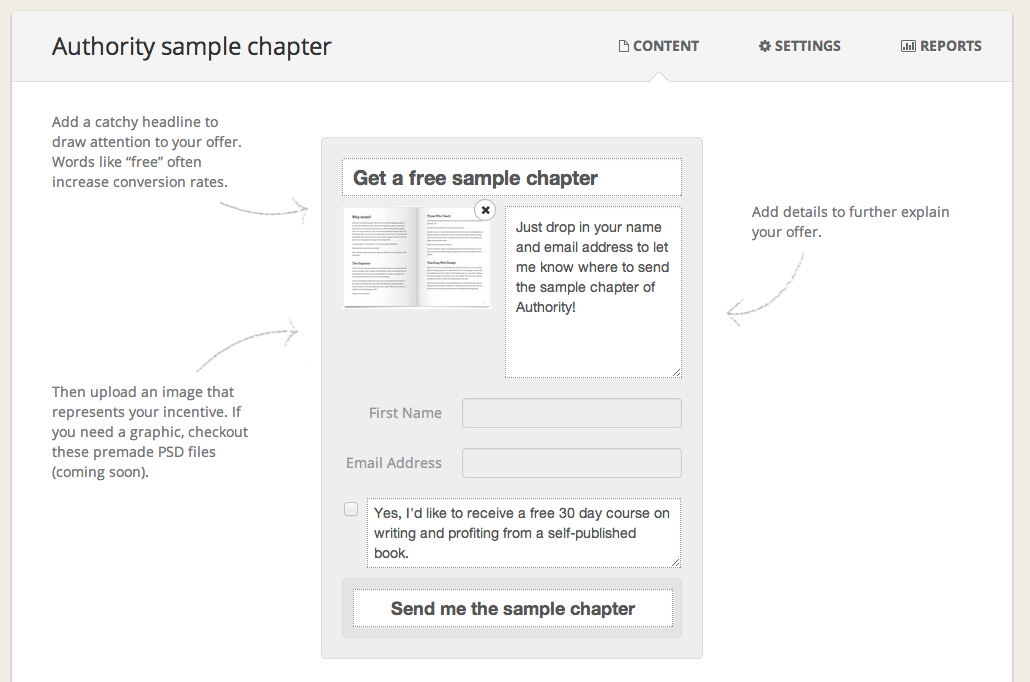
2. Upload the sample chapter or link to a URL
Move to the Settings tab and upload the PDF directly in ConvertKit or click the URL button if you already have it hosted somewhere and want to paste in the link.

3. Customize the incentive email
The incentive email is what gets sent immediately after the visitor subscribes. Set the subject and introduction content, then customize the button text. When the button is clicked it will confirm their subscription and then seamlessly redirect them to the PDF you uploaded in the previous step.
I like to make these emails personal and casual.
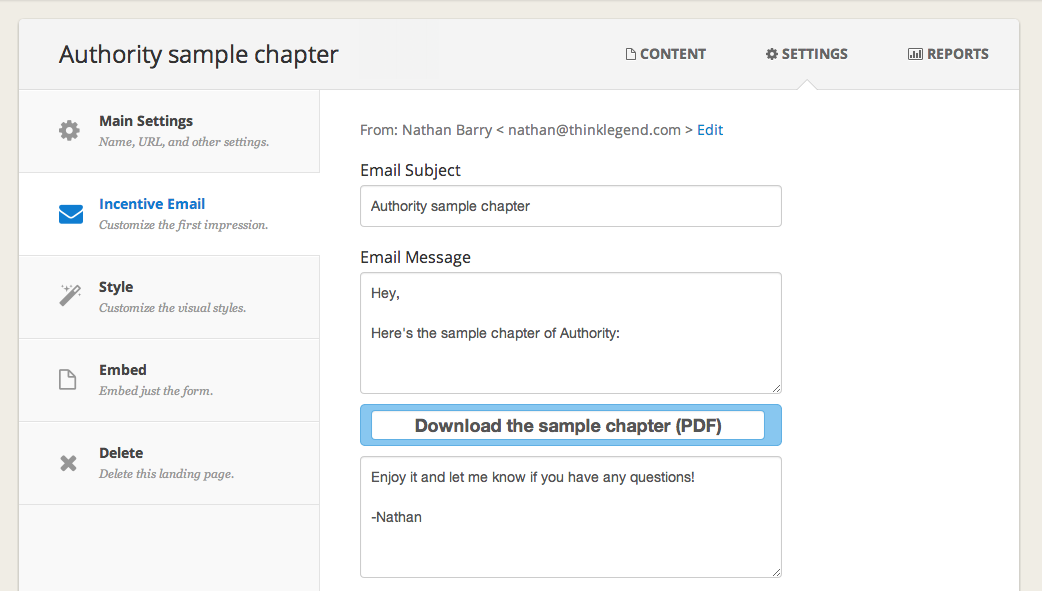
4. Add the email course
Go to the Courses tab and create a new course. Once you name the course it will be automatically pre-filled with emails at recommended intervals. Each one of these is a draft email, so it won’t be sent until you set it to published (and the subscriber has been subscribed for the specified number of days).
Drag and drop the emails to reorder them (which will swap their send dates) and delete any emails you don’t plan to use. Here’s a sample of one of my courses:
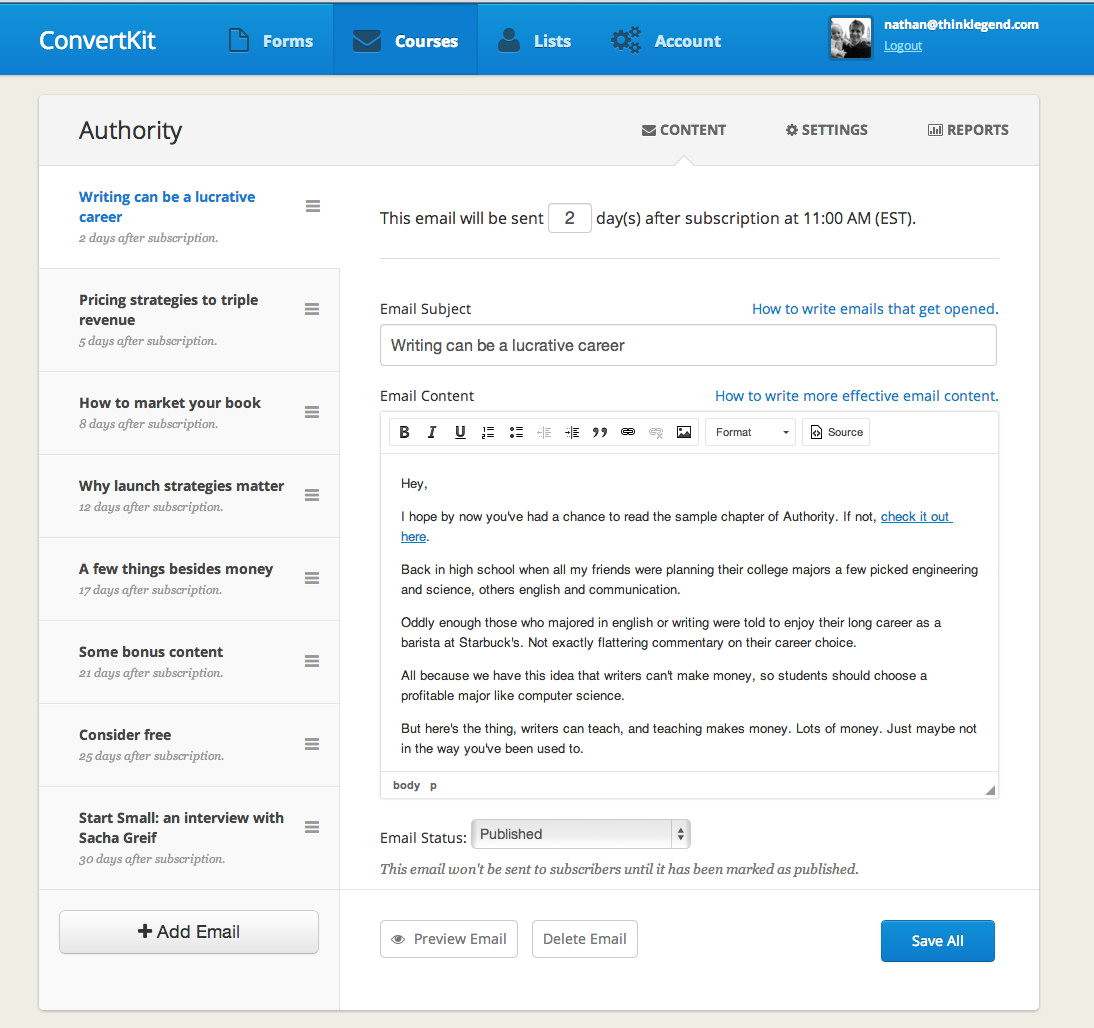
You also don’t have to finish the entire course before you get your first subscriber. In fact, if a subscriber is 10 days into your course and you add an email on day 7, ConvertKit will know that that subscriber hasn’t received that email yet, so and will send it to them. Sending up to one email per day until the subscriber has been caught up.
So I have a course with over 2,000 subscribers that I’ve been writing for several months. I just add a lesson whenever I have time. Every subscriber will get it, and new subscribers will get it exactly in the timed sequence specified.
So a lack of time is not an excuse!
5. Connect the course to your form
Once the basics are setup on your course (it doesn’t even need content yet) go back to the Settings page on your form and scroll to the bottom. There you can see an option to select a course for that form. Select the one you just created.

That will add a small text area onto your form itself, so go to the Content tab for your form and customize the text that was added in.
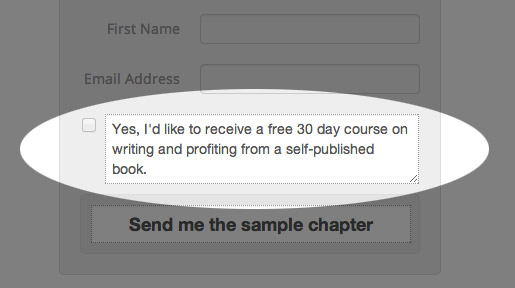
With that saved your form is ready to go!
6. Embed the form
To embed the form in your site you have a couple options. Click over to the form Settings and click the Embed tab. From there you can copy and paste a single line of JavaScript or—if you need to customize the HTML or CSS—the full embed code.
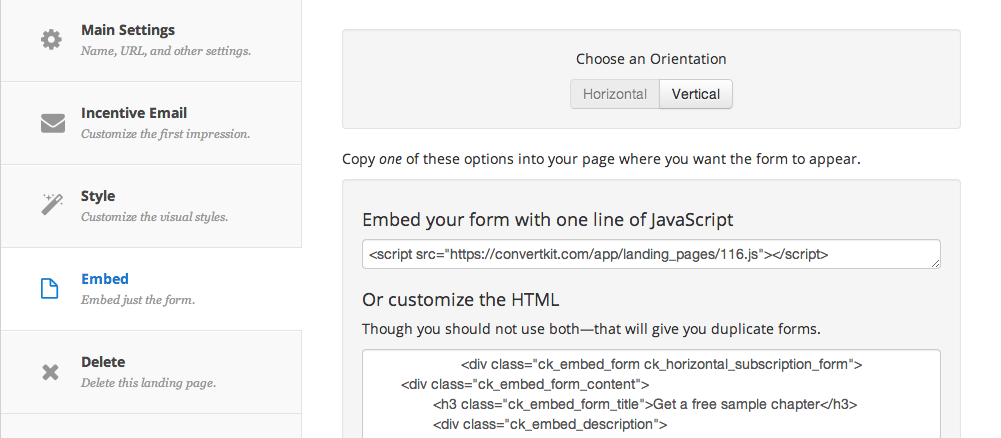
You can also use our WordPress plugin if that is easier and works with your sales page.
Six easy steps and you are capturing more leads, growing your email list, and making more sales! Seriously, go sign up for ConvertKit to get this process started.
A few takeaways
Sustaining sales after a launch is always difficult, but this is one of my favorite methods. Setup correctly it should continue to drive sales for many months to come. Here are the important points from the article:
- Giving away your sample chapters using an email form is an effective way to build your email list.
- Using a visual representation of the sample chapter will increase your conversion rate for downloads.
- Using an automated email course to educate and follow-up with subscribers will improve sales.
- Powering the entire thing with ConvertKit is easy and a great way to increase revenue.
Finally, if you want to learn more about building an audience and selling a book or course, take a look at Authority. It’s everything I know on the topic.
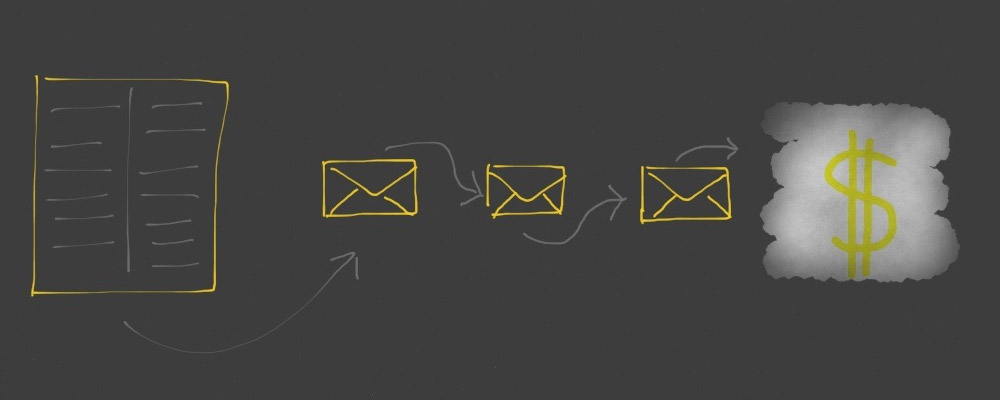
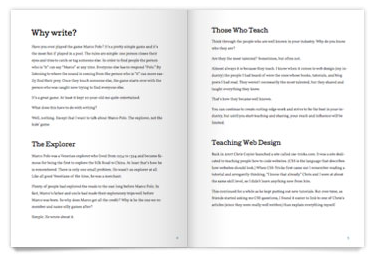
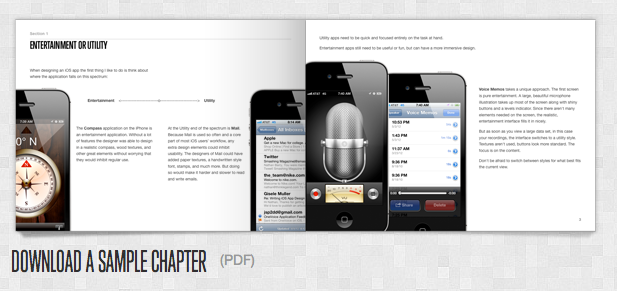


Do you think that the ‘App Design Handbook’ doesn’t convert that high because of the copy?
What if you had a longer and more personal copy that is more in-depth?
Thanks for this post. I’m publishing an eBook soon and will definitely be taking the advice here.
I’d argue that the difference in conversion rate could be down to subject matter too.
App design is a somewhat niche interest area where Authority ultimately appeals to a much wider audience – I.e. Anybody who creates content on the web with some form of knowledge.
Great clear post as always Nathan.
Hi Justin,
data supplied from Nathan say that App design visitors are +20% than Authority.
IMHO the visual impact is the key point along with a good copy that should be short&sweet ;-)
But I agree with you that this post is indeed very helpful as usual from Nathan!
Hey Nathan, my guess as to why the Authority free chapter converts higher is that it’s not as obvious that the PDF can be downloaded without an email address:
http://glui.me/?i=1tqknyghft96kvk/2013-09-30_at_10.01_AM.png/
Any insights as to why Authority converted more?
I suspect quality of traffic too… would love to hear your take Nathan?
Thanks either way, this is – as usual – one heck of a post. :)
All the best & God bless.
Hi Nathan,
I would assume it might also have to do with the title:
Download a sample
Get a free sample chapter
(where also Get a free sample chapter in authority i somehow consistingly used in the form)
Just my gut ;o)
Best,
Jochen, Berlin